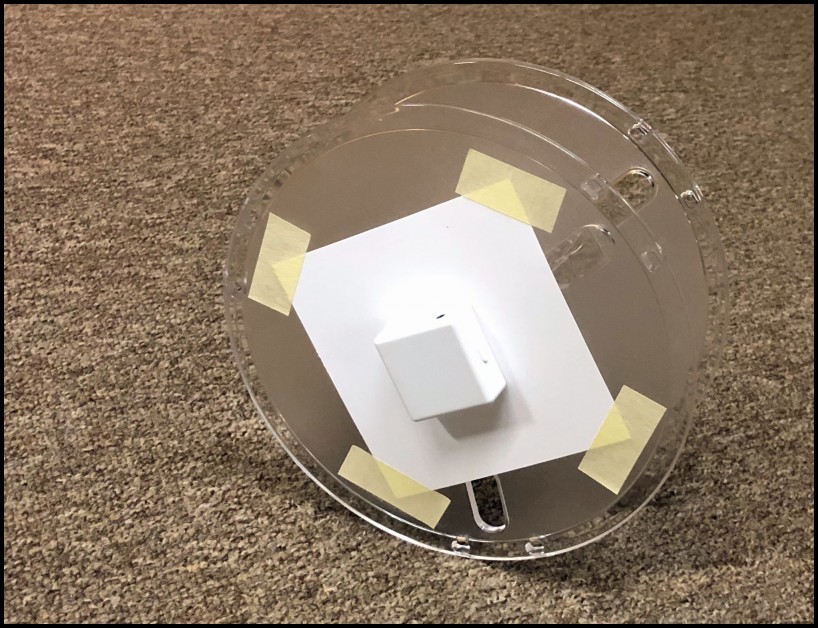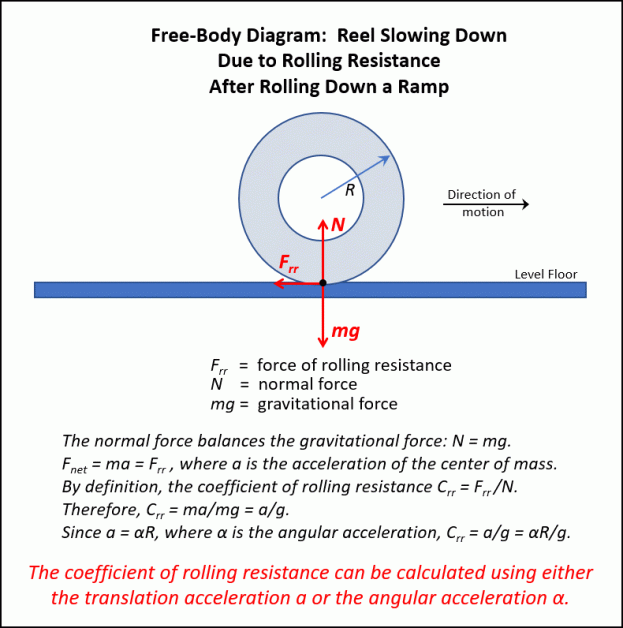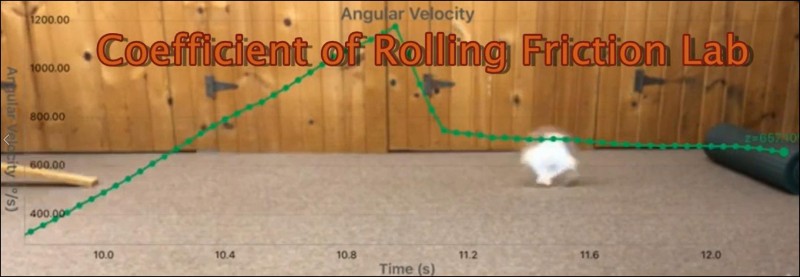Rolling Resistance
Rolling resistance is a force that opposes the motion when an object rolls along a surface.There are many examples of objects experiencing rolling resistance: car or bicycle tires on pavement, skateboard wheels on a half pipe ramp, steel wheels on a railroad track, ball bearings in a pulley, bowling balls on a bowling lane, and carts rolling on a dynamics track, just to mention a few. Many factors can affect the magnitude of the forces associated with rolling resistance. These include the wheel substance, the surface on which it is rolling, pressure created by the load it may be carrying, bearings holding the wheel to its axle, surface adhesion, and wheel diameter.
In this experiment an empty 3D filament reel on a flat surface gradually slows down and stops due to rolling resistance. Two very different surfaces are compared—a carpeted floor and a wood floor. In the case of a carpet, the primary factor affecting rolling resistance is deformation of the carpet as the reel rolls. Not all of the energy needed to deform the carpet is recovered when the pressure from the reel is removed. In other words, the effect is non-elastic. The purpose of this experiment is two-fold: (1) to determine the coefficient of rolling resistance between the reel and the surface on which it rolls, and (2) to gain a practical understanding of the meaning of this coefficient.
Figure 1 shows the empty 3D filament reel resting on its rims on a carpet. PocketLab Voyager is attached to the center of the reel with masking tape. Voyager is oriented in such a way that the z-axis is the desired axis of rotation when using the PocketLab app.

Physics Primmer on Rolling Resistance
Figure 2 shows the free-body diagram of the reel as it slows down from rolling resistance. The normal and gravitational forces are equal in magnitude but opposite in direction as the reel rolls on the level plane of the surface. From Newton's second law, the net force, ma, is therefore equal to the force of rolling resistance. The coefficient of rolling resistance is defined by the equation shown in the diagram as the ratio of the force of rolling resistance to the normal force. The coefficient of rolling resistance is, therefore, a dimensionless quantity that can be thought of as the force per unit weight required to keep it moving at a constant speed on a level surface, assuming negligible air resistance.

Video
The short 3-second video below shows the empty 3D filament reel slowing down due to rolling resistance after leaving a ramp. The PocketLab app displays z-angular velocity data. The negative slope of the graph while the reel rolls on the floor indicates that the reel is slowing down. The value of the slope gives the angular acceleration of the reel.
Results
Figure 3 shows an Excel graph of angular velocity data collected by the PocketLab app. The reel was released from rest on a ramp. While the use of a ramp allows for repeatablily of the experiment if desired, students could simply give the reel an initial push. This data was for the reel slowing down while rolling on a carpeted floor. The graph shows how to compute the angular acceleration, and ultimately the coefficient of rolling friction. The coefficient of rolling friction for the reel rolling on a carpet was 0.0135. The experiment was repeated by the author of this lesson for the reel rolling on a smooth wooden floor. In this case the coefficient of rolling friction turned out to be 0.0047, approximately one-third that of the reel rolling on the carpet. Clearly, the coefficient of rolling friction depends on the nature of the two surfaces that are in contact with one another.

Additional Labs Making Use of Empty 3D Filament Reels

